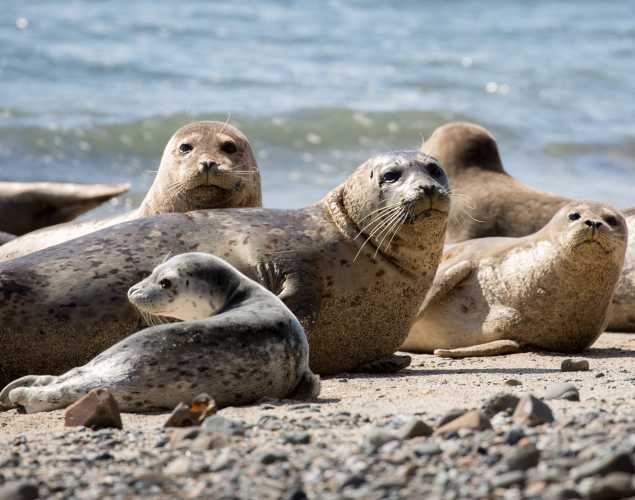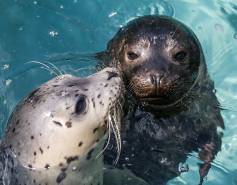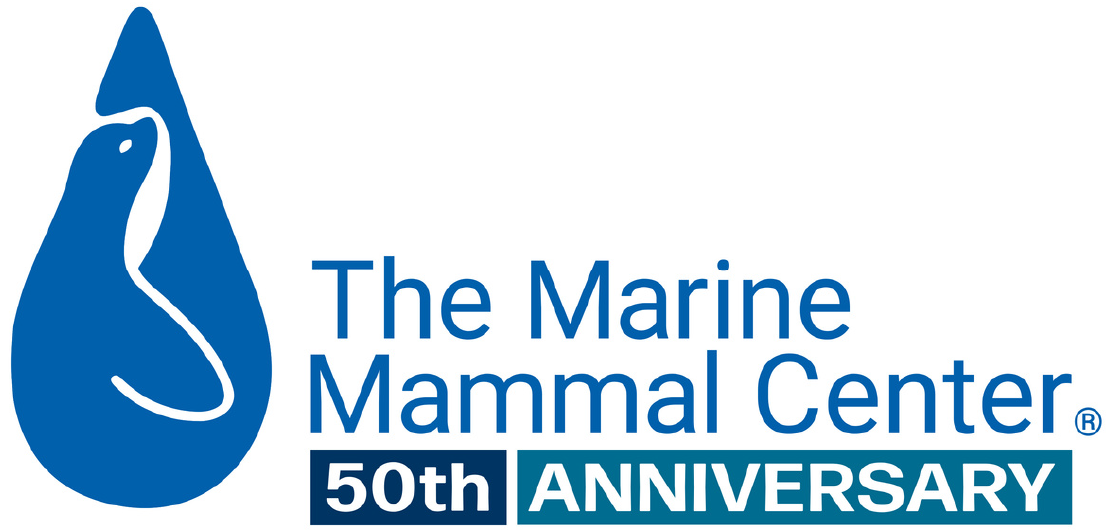
Fetal Mercury Concentrations in Harbor Seals: Associated Drivers and Outcomes
- Pollution
Abstract
Mercury (Hg) is a well-known toxicant in wildlife and humans. High total Hg concentrations ([THg]) have been reported in central California harbor seals Phoca vitulina richardii. We evaluated the effects of presence/absence of early natal coat (lanugo), year (2012 to 2017), sex, stranding location, and trophic ecology (ẟ13C and ẟ15N values) on hair [THg] along coastal central California. Also examined were [THg] effects on growth rates of pups in rehabilitation and probability of release (e.g., successful rehabilitation). The [THg] ranged from 0.46–81.98 mg kg−1 dw, and ẟ15N and ẟ13C ranged from 13.6–21.5‰, and −17.2 to −13.0‰, respectively. Stranding location, year, and presence of lanugo coat were important factors explaining variation in [THg]. Seals from Sonoma and San Mateo County had higher [THg] than other locations. Seals with full or partial lanugo coat had lower [THg]. Seals from 2016 and 2017 had higher [THg] than those from 2015. Hair [THg] exceeded lower and upper toxicological thresholds (>20 mg kg−1 by year (5.88% to 23.53%); >30 mg kg−1 (0% to 12.31%)) with a pronounced increase from 2015 to 2016. Pups in 2017 had significantly higher odds ratio of [THg] above 20 mg kg−1 than pups of 2015, and pups in 2016 had significantly higher odds ratio than those from 2013 and 2015 (similar when using 30 mg kg−1). Pups in Sonoma County had the highest odds ratio for [THg] in lanugo above 20 mg kg−1. ẟ15N values were higher in 2015–2017, particularly relative to 2014, probably associated with the El Niño event. The [THg] was not a good predictor for probability of release and mass-specific growth rates in captivity. Further investigation of temporal trends of [THg] in harbor seals is warranted given the relatively high percentage of samples exceeding threshold values, particularly in the most recent sampling years.
Murillo-Cisneros, D.A., McHuron, E.A., Zenteno-Savín, T., Castellini, J.M., Field, C.L. and O'Hara, T.M., 2022. Fetal mercury concentrations in central California Pacific harbor seals: Associated drivers and outcomes. Science of The Total Environment, p.153246.
Related Publications
{"image":"\/Animals\/Patients\/Harbor seals\/2019\/cropped-images\/hs-aquapup-1-by-bill-hunnewell-c-the-marine-mammal-center-164-4-2324-1816-1606771695.jpg","alt":"two harbor seals","title":"Effects of Mercury Exposure in Harbor Seal Pups","link_url":"https:\/\/www.marinemammalcenter.org\/publications\/effects-of-mercury-exposure-in-harbor-seal-pups","label":"Research Paper"}

{"image":"\/Animals\/Patients\/California sea lions\/2018\/cropped-images\/csl-leadbelly-by-bill-hunnewell-c-the-marine-mammal-center-664-0-2502-1954-1607626905.jpg","alt":"California sea lion","title":"Contaminant Exposure and Herpesvirus Associated with Cancer in Wild Sea Lions","link_url":"https:\/\/www.marinemammalcenter.org\/publications\/contaminant-exposure-and-herpesvirus-associated-with-cancer-in-wild-sea-lions","label":"Research Paper"}

Contaminant Exposure and Herpesvirus Associated with Cancer in Wild Sea Lions
Read More{"image":"\/Animals\/Wild\/Humpback whale\/cropped-images\/humpback-whale-sea-lions-photo-c-bill-hunnewell-190-2-2774-2167-1659123832.jpg","alt":"humpback whales and California sea lions feeding","title":"Aquatic Mammals","link_url":"https:\/\/www.marinemammalcenter.org\/publications\/aquatic-mammals","label":"Research Paper"}

{"image":"\/Animals\/Wild\/Hawaiian monk seal\/cropped-images\/hawaiian-monk-seal-in-fishing-gear-shutterstock-103-0-4424-3455-1714076342.jpg","alt":"Hawaiian monk seal in the middle of a large plastic fishing net and buoys","title":"Marine Mammals and Plastics in the Ocean","link_url":"https:\/\/www.marinemammalcenter.org\/publications\/marine-mammals-and-plastics-in-the-ocean","label":"Research Paper"}

Related News
{"image":"\/Misc\/Graphics\/Ocean Plastic Pollution.jpeg","alt":"plastic pollution floating in the ocean","title":"NBC Bay Area: Plastic pollution causing a sea of trouble","link_url":"https:\/\/www.marinemammalcenter.org\/news\/nbc-plastic-pollution-causing-a-sea-of-trouble","label":"In the News","date":"2024-11-26 01:00:00"}

{"image":"\/Places\/Coastal landscapes\/cropped-images\/shutterstock_palos verdes ddt-0-1-1270-992-1728333594.jpg","alt":"view of Palos Verdes coastline","title":"Newsweek: Toxic Contamination in Our Oceans Can Reach Our Kitchen Tables | Opinion","link_url":"https:\/\/www.marinemammalcenter.org\/news\/newsweek-opinion-toxic-contamination-in-our-oceans-can-reach-our-kitchen-tables","label":"In the News","date":"2024-10-07 02:00:00"}

Newsweek: Toxic Contamination in Our Oceans Can Reach Our Kitchen Tables | Opinion
October 7, 2024
Read More{"image":"\/Animals\/Patients\/Releases\/cropped-images\/csl-release-by-bill-hunnewell-c-the-marine-mammal-center-278-2-3752-2931-1715194127.jpg","alt":"two California sea lions return to the wild","title":"Voice of America: Sea Mammals and Ocean Health","link_url":"https:\/\/www.marinemammalcenter.org\/news\/voice-of-america-sea-mammals-and-ocean-health","label":"In the News","date":"2024-04-17 02:00:00"}

{"image":"\/Places\/Coastal landscapes\/cropped-images\/underwater-barrel-shutterstock-328-0-4424-3456-1651790853.jpg","alt":"rusty barrel underwater and covered with algae","title":"The Hill: 'Under the Sea, Out of Mind' Has Turned Into a Ticking Time Bomb","link_url":"https:\/\/www.marinemammalcenter.org\/news\/the-hill-under-the-sea-out-of-mind-has-turned-into-a-ticking-time-bomb","label":"In the News","date":"2022-05-03 02:00:00"}

The Hill: 'Under the Sea, Out of Mind' Has Turned Into a Ticking Time Bomb
May 3, 2022
Read More
